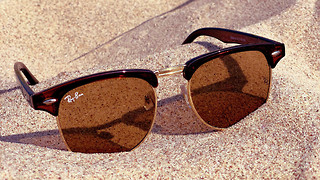Arts Comment: In defence of modern art
Visual Arts critic Eliot D’Silva response to last week’s Arts Comment piece on contemporary art.
Lara Prendergast doesn’t like the idea that “we’re distinctly anti-enlightened” as viewers and readers of contemporary art. Her statement, published in last week’s Arts Comment, comes after a hectoring string of sarcastic clauses about Beauty (“She’s concrete, and what’s more, she’s conformist”), an “ephemeral abstract concept” which has somehow been standardised by late capitalism. But such smart rhetoric ought not distract us from the utter softness of her propositions. Quite obviously on the defensive, Prendergast reacts boorishly against modernity with a historical gloss of Britain’s cultural “devolution”, reminding us how “…evolution has been linked to our ability to use tools” and that “Since Andy Warhol, the idea of the factory has allowed artists to get away with all manner of crimes.”
One problem with these objections is that they’re not clearly defined: one feels impelled to heckle back “linked by whom?” and “crimes committed by which artists?” To be specific, let’s take the deadpan Dada joker Marcel Duchamp who in 1917, 11 years before Warhol’s birth, foisted his Fountain sculpture upon the Society of Independent Artists show in New York. Consisting of a readymade urinal purchased from Fifth Avenue’s J.L.Mott Iron Works, rotated 180 degrees, and tagged with a pseudonym, the work’s fame does not demonstrate how we’ve “whored ourselves out to the mass-produced object.” Rather, as a canny visual experiment, hanging something so mass-produced in a gallery allowed Duchamp to strip art of its claim to uniqueness. No longer posing as ‘unique’ or ‘authentic’, the distances between art and everyday life, gallery and urinal, artist and viewer are broken down. It is not that, as Prendergast believes, art works to “narrate a story about the condition of society”; Duchamp reminds us that art is in our society and a vital part of its story.
This ‘modernist’ ethos can be traced back to the 16th century painting of Francesco Parmagianino. In Self-Portait in a Convex Mirror, his most enduring work, the artist rendered his own image in a mirror as he saw himself when painting. Crafted using glazed oil paint applied onto a piece of mirror-sized wood, the title’s ‘mirror’ and the face it reflects seem less within the picture plane than shimmering upon it. It’s this weird play of perspectives that gives the self-portrait its haunted, wisecracking beauty, of which John Ashbery, in his 1975 poem of the same title, would write: “But your eyes proclaim / That everything is surface. The surface is what’s there / And nothing can exist except what’s there.”
I’ve quoted these lines not only because they’re dazzling (Ashbery’s poem scooped up the Pulitzer Prize, National Book Award, and National Book Critics’ award!), but because they pinpoint how wrong Prendergast is. Surface, Pamagianino’s glazed painting like Duchamp’s shiny urinal makes clear, is crucial to craft. But it’s not as if by fetishizing the handmade with all the bourgeoise melancholy of Supernanny (“Children need to be taught how to sew and knit”, Prendergast opines) we’ll pierce through this surface into the abstract realms of true “Beauty”, “Honesty” and “dignity”.
Instead, realising that everything is surface, today’s most creative and interesting art has made us question how surfaces – from those of digital photography to the printed pages of free-verse poetry - might be explored, organised and often enhanced with the aid of modern technology. Speaking to musically minded friends, many cite Joe Snape’s performance at this term’s Chapel Sessions, where a classical composition was played in unison with a digital light show, as a Cambridge arts highlight. Good art often gives us pleasure: the kinds of pleasure it gives are simply changing, for the better, in the here and now of this crazy, media-soaked climate of early twenty-first century life.
 Comment / Plastic pubs: the problem with Cambridge alehouses 5 January 2026
Comment / Plastic pubs: the problem with Cambridge alehouses 5 January 2026 News / Cambridge businesses concerned infrastructure delays will hurt growth5 January 2026
News / Cambridge businesses concerned infrastructure delays will hurt growth5 January 2026 News / New movement ‘Cambridge is Chopped’ launched to fight against hate crime7 January 2026
News / New movement ‘Cambridge is Chopped’ launched to fight against hate crime7 January 2026 News / AstraZeneca sues for £32 million over faulty construction at Cambridge Campus31 December 2025
News / AstraZeneca sues for £32 million over faulty construction at Cambridge Campus31 December 2025 Interviews / You don’t need to peak at Cambridge, says Robin Harding31 December 2025
Interviews / You don’t need to peak at Cambridge, says Robin Harding31 December 2025









